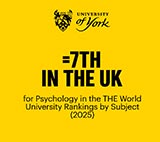
PhD Talks: Neuroimaging (Language / Perception)
Tuesday 29 April 2025, 4.00PM to 5.00pm
Speaker(s): Ramya Balakrishnan, Alex Carter, Nena Evgeniadou
Color and luminance contrast adaptation measured using pupillometry and EEG.
Previous behavioural evidence suggests both color and luminance contrast adaptation reduces contrast sensitivity in the post-adaptation period. This effect is chromatically-tuned: adaptation is greatest when the adaptor and probe lie on the same color axis. Here, we conducted two experiments. First, we ask whether we can measure physiological correlates of this adaptation; EEG data were recorded from primary visual cortex (V1) and pupil diameter was measured. Stimuli were flickering color or luminance disks presented during a pre-adapt probe, adaptation, and post-adapt probe period. Pre- and post-adapt probes were always the same color and we examined combinations (adapt/probe) of two colour directions: luminance or blue/yellow with four conditions overall. Pupil data showed luminance adaptation increased pupil diameter more for luminance than blue/yellow probe, with blue/yellow adaptation having little effect. Contrary to our expectations, EEG data from V1 showed no overall effect of adaptation, and no differences across conditions. Given these results we ran a second EEG experiment, looking at all three color axes; luminance, red/green and blue/yellow. We suggest that the reason V1 shows no overall adaptation, while behavioural studies do, is because adaptation is best modeled not as ‘fatigue’ but as a dynamic re-tuning process that has different effects across the neural population: neurons with different contrast properties alter their tuning in different ways depending on the adapting stimulus and while the effect on the population used to measure perception is a reduction in response, the overall effect on the population response (which is what EEG measures) is less well-defined.
Location: PS/B/020
